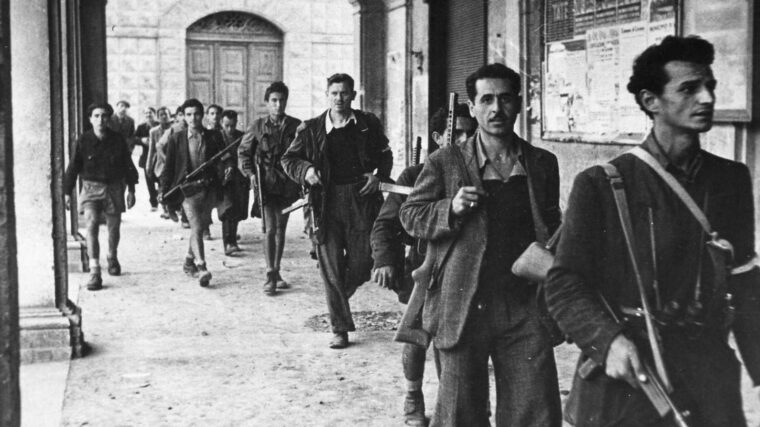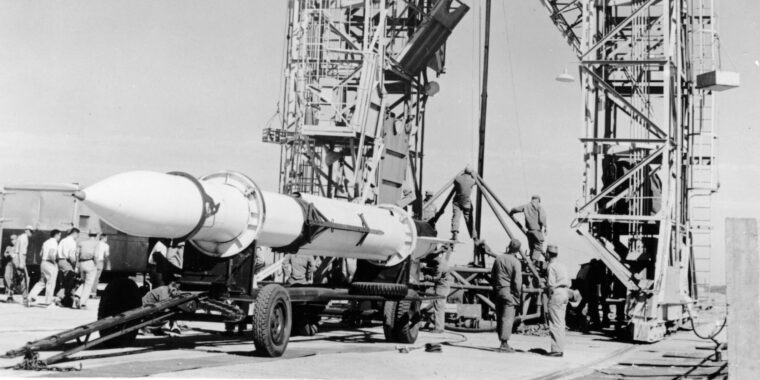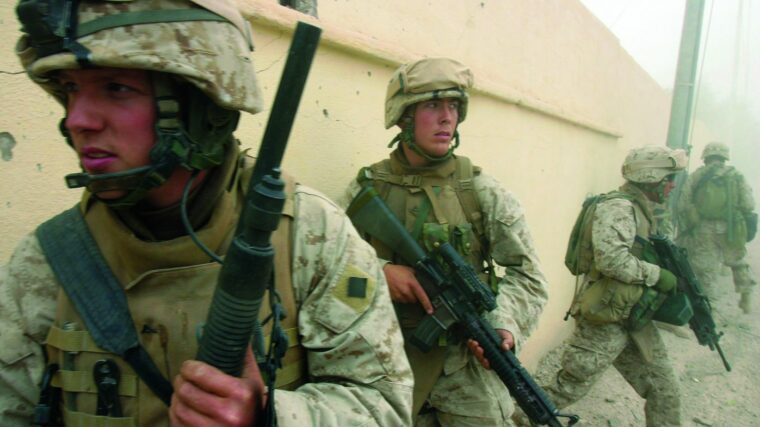
Cold War
Cold War Intelligence
By John D. GreshamEveryone who has ever read a spy novel knows the basic plot line. A scientist has developed a formula, or intelligence operative has obtained secret plans or a roll or film. Read more

Cold War
Everyone who has ever read a spy novel knows the basic plot line. A scientist has developed a formula, or intelligence operative has obtained secret plans or a roll or film. Read more

Cold War
Letters home provide us with a glimpse into the daily lives of soldiers during the best and worst times. Read more

Cold War
The Messerschmitt Bf-109 fighter plane dove out of the sky with machine guns firing. The pilot’s target—a pontoon bridge being stretched across Germany’s Werra River by American engineers. Read more

Cold War
By 1944, many top generals in Adolf Hitler’s army understood the war was lost and that they had better make arrangements to ensure their safety. Read more

Cold War
Design work for a minimum-size atomic warhead called the XW-51 began at the University of California Radiation Laboratory in the mid 1950s. Read more

Cold War
With the exception of the French Foreign Legion, the concept of the mercenary, or soldier of fortune, seemed extinct after World War II. Read more

Cold War
On the morning of February 23, 1945, on the tiny Pacific island of Iwo Jima, a 40-man patrol gathered at the 5th Marine Division headquarters for their final briefing with battalion commander Lt. Read more

Cold War
Peering intently through a telescope, General Lemuel C. Shepherd, the commandant of the Marine Corps, scanned the shell-pocked Korean terrain in front of his position. Read more

Cold War
As 1944 drew to a close, the British in Greece found themselves in a parlous situation. They had agreed to support the restoration of Greek civil authority while overseeing the distribution of aid and the re-creation of armed forces to ensure internal security, all while commitments elsewhere were straining them almost to the breaking point. Read more

Cold War
Six days after the Allies’ D-Day landings on the coast of Normandy in June 1944, Germany retaliated by launching its first Vergeltungswaffe, or Vengeance Weapon, at the city of London. Read more

Cold War
In June 1961, Walter Ulbrecht, longtime Communist party leader of East Germany, denied that his government had any intention of building the Berlin Wall, which would separate East and West Berlin. Read more

Cold War
The world awoke to ominous news on September 22, 1980. Iraqi despot Saddam Hussein had launched a massive armored and air attack across the Iraq-Iran border. Read more

Cold War
“To the Great Stalin, from the grateful Hungarian People,” read the inscription on a 24-foot-high bronze statue of Joseph Stalin on the grounds of Budapest City Park, erected in 1951 to honor the tyrant of the Soviet Union. Read more

Cold War
The year 2007 marked the 30th anniversary of the E-3 Sentry’s Airborne Warning and Control System (AWACS) service to the United States Air Force. Read more

Cold War
On February 24, 1991, the ground phase of Operation Desert Storm began. Over the next four days, the soldiers of an international coalition, formed to eject the Iraqi army of Saddam Hussein from the neighboring nation of Kuwait, carried out a whirlwind offensive that quickly overwhelmed their foe. Read more

Cold War
The Chinese always attacked at night. It was April 22, 1951, and the Communists had just launched the largest offensive of the Korean War. Read more

Cold War
The city of Hue was the capital of a unified Vietnam from 1802 until 1945. With its stately, tree-lined boulevards, Buddhist temples, national university, and ornate imperial palace within a massive walled city known as the Citadel, Hue was the cradle of the country’s culture and heritage. Read more

Cold War
Coming upon the enemy’s rear guard outside the western Kentucky village of Sacramento, four days after Christmas 1861, Confederate Colonel Nathan Bedford Forrest ordered his cavalry to advance. Read more

Cold War
The first few years after World War II were challenging ones for the U.S. Navy. Massive demobilization of personnel and rapid scrapping or retirement of ships created internal disruptions. Read more

Cold War
At noon on Good Friday, March 30, 1972, more than 25,000 North Vietnamese Army (NVA) soldiers, backed by state-of-the-art Soviet tanks, artillery, and mobile antiaircraft missile platforms, poured across the Demilitarized Zone separating the two Vietnams. Read more